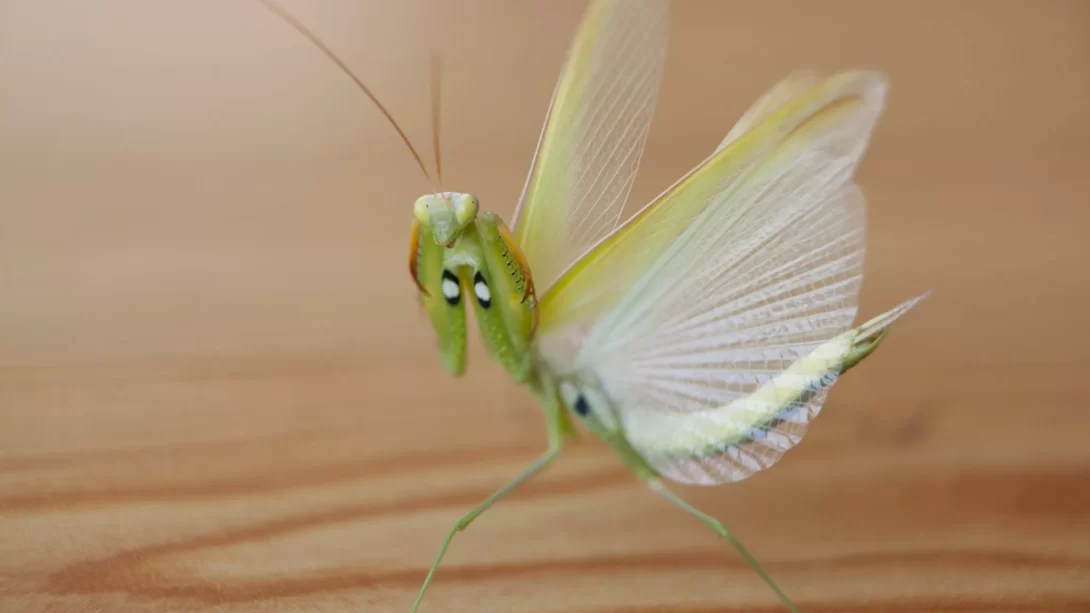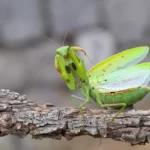Praying mantises, renowned for their unique predatory skills and distinctive appearance, are a fascinating subject in the insect world. One intriguing aspect of their anatomy is the presence and functionality of wings. This article aims to explore and elucidate the wing structure of praying mantises, offering insights into their varied uses and significance.
Praying Mantises
Praying mantises belong to the order Mantodea and are characterized by their elongated bodies, triangular heads with large eyes, and their prominent front legs which are often held in a position that resembles prayer. These insects are known for their predatory behavior, which involves stealth and precision. Their physical attributes, including their wings, play a crucial role in their survival and predatory efficiency.
The Anatomy of Praying Mantis Wings
Praying mantises do have wings, but their structure and functionality can vary significantly among different species. Typically, adult mantises have two sets of wings. The outer wings, or tegmina, are often leathery and serve as protective covers for the more delicate inner wings used for flight. These inner wings are typically larger and more membranous, enabling the mantis to fly, albeit usually over short distances.
Functionality of Wings in Praying Mantises
The wings of a praying mantis are not just for show; they serve several important functions. In many species, particularly males, the wings are strong and capable enough for flight. This ability is often used for quick escapes from predators, to cover larger territories while searching for mates, or to find new hunting grounds. The flight of a praying mantis is not typically graceful or sustained but is more of a controlled glide or burst of speed.
Sexual Dimorphism in Praying Mantis Wings
There is a notable difference in the wings of male and female praying mantises, a phenomenon known as sexual dimorphism. Generally, male mantises have longer and more functional wings, adapted for flying. Females, on the other hand, often have shorter wings that may not be suitable for flight. This difference is largely due to the females’ larger size and weight, especially when gravid (carrying eggs), which makes flight more challenging and energy-consuming.
The Evolutionary Significance of Wings in Praying Mantises
The development of wings in praying mantises is an evolutionary trait that has contributed significantly to their survival and adaptability. Wings have allowed these insects to explore new habitats, escape predators, and spread to different geographical areas. Moreover, the evolution of wing structure and function in praying mantises reflects a balance between the need for mobility and the energy costs associated with flight, particularly in different sexes.
Observing Praying Mantis Wings in Nature
For nature enthusiasts and gardeners interested in observing praying mantises, paying attention to their wings can offer insights into their behavior and species identification. When observing mantises, note the size, shape, and movement of the wings. Male mantises, especially during mating season, may be seen flying or fluttering their wings to attract females. Observing these insects in gardens or natural habitats can provide an opportunity to witness their unique flight capabilities and understand their ecological role.
Identifying Different Species Based on Wing Characteristics
Different species of praying mantises have distinct wing patterns and structures. For example, the European Mantis (Mantis religiosa) typically has wings that extend beyond its abdomen, while the Carolina Mantis (Stagmomantis carolina) often has shorter wings. By noting these characteristics, observers can learn to identify various species and appreciate the diversity within the Mantodea order.
Conclusion
Praying mantises possess a fascinating wing structure that plays a vital role in their survival and behavior. The wings serve various functions, from protection to flight, and exhibit notable differences between males and females, reflecting their distinct ecological roles. Understanding the anatomy and functionality of praying mantis wings deepens our appreciation of these remarkable insects and their place in the natural world. For gardeners and wildlife enthusiasts, observing these creatures offers a window into the complex and intriguing world of insect behavior and evolution.




